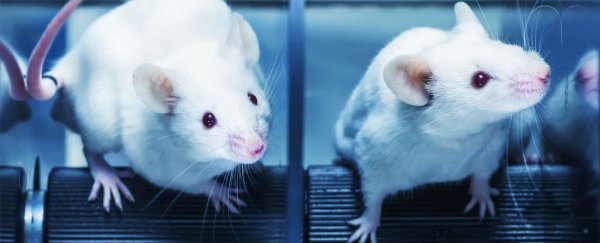Interest in a manned trip to Mars has never been greater, but before we send a team of astronauts up there, we need to figure out the potential effects of spending an extended amount of time in space, which is part of the reason for why Scott Kelly is spending a whole year on board the International Space Station.
Now a recent NASA-funded study has come up with some interesting findings to consider: when adult mice were exposed to space radiation, they became better at completing a challenging 'pattern separation' task that required them to distinguish between two different types of environments. These mice not only performed better than the control mice - they also performed faster.
The results are particularly interesting because younger mice - the equivalent of human teenagers - had been shown to get worse at completing the same tasks after their exposure to the high-energy particles of deep space. In other words, the performance of the older mice got better, and the performance of the younger mice got worse.
At this stage, the team from the Southwestern Medical Centre (part of the University of Texas) is still trying to figure out why this is the case. Plenty of previous studies have shown the harmful effects of radiation, so it's important not to rush to any conclusions, but one possibility is that the mice became better at this particular task while becoming less capable in other areas.
"[T]he improvement may have come from their brains' new reliance on another system that supports these kinds of tasks. Or perhaps it could be an altered pattern of neurons or mossy cells," says Kelsey Campbell-Dollaghan at Gizmodo. "These mice are great at discriminating, will they be terrible at making generalisations?"
The new study looked specifically at the hippocampal region of the brain that regulates long-term memory, emotion, and spatial navigation. Obviously, if this crucial cog in an astronaut's mind were to go awry somehow, a manned mission to Mars could get into trouble very quickly indeed. With a journey on the NASA scheduled for 2030, it's crucial that we know as much as possible about what's likely to happen in advance.
The subatomic particles found in space move at high speeds and have the potential to tear through the structures of our human DNA. Fortunately, the Earth's magnetic field, generated by electric currents in the planet's liquid iron core, serves to shield us from 99.9 percent of this radiation - out in space and on the surface of Mars, artificial protection is going to be essential.
The study is currently undergoing peer review ahead of publication, but in the meantime, you can expect plenty more investigations into how our Mars astronauts might cope with spending several years away from Earth.

